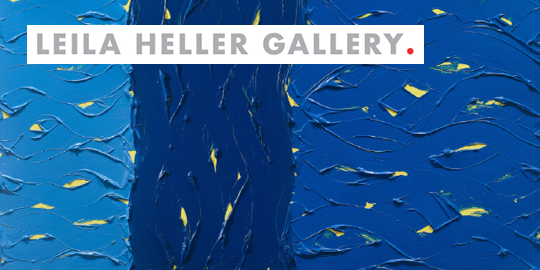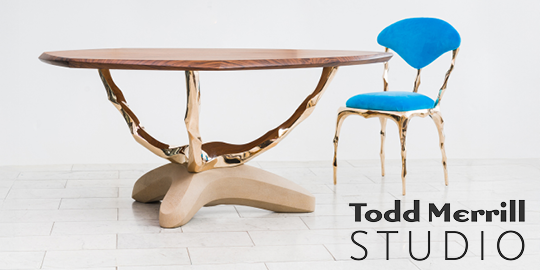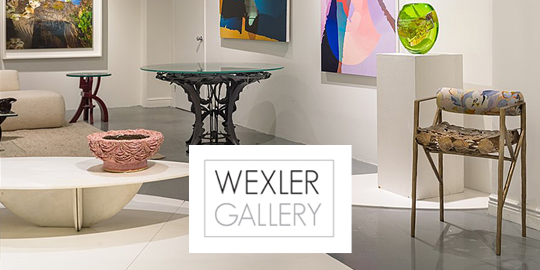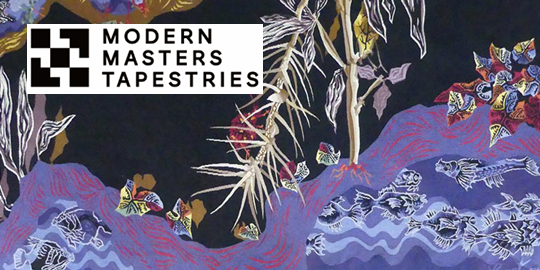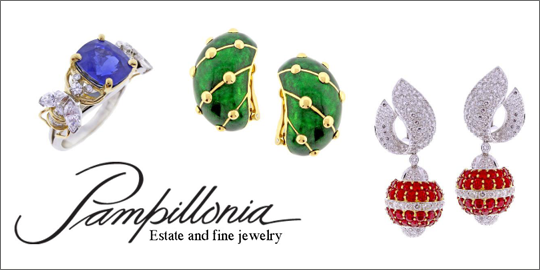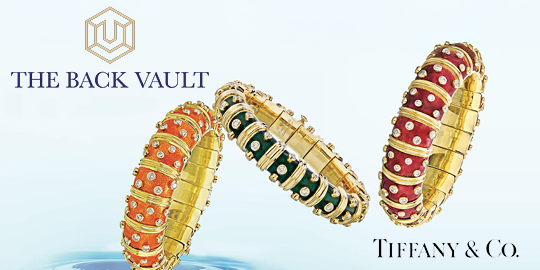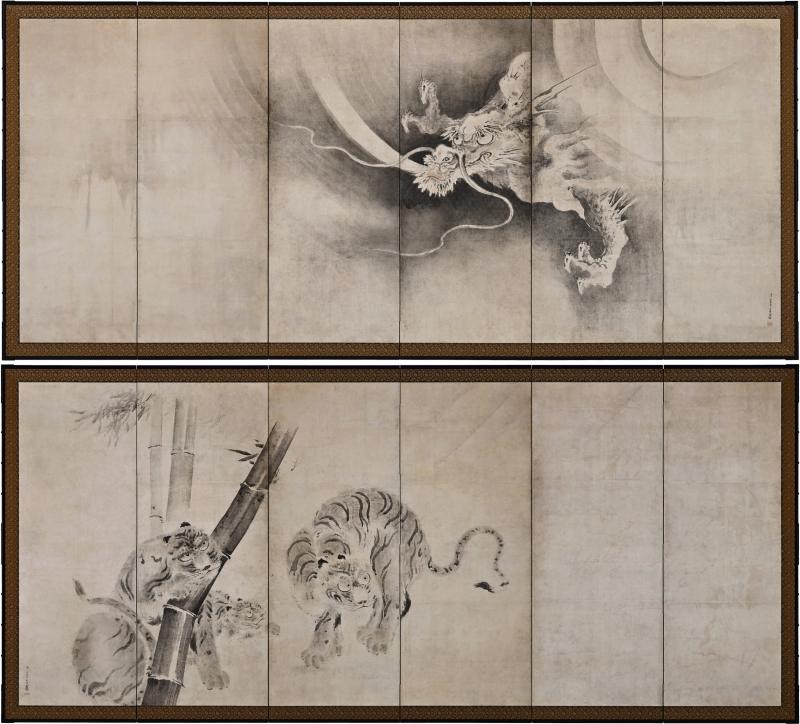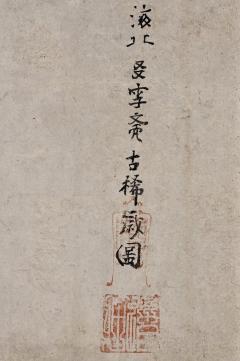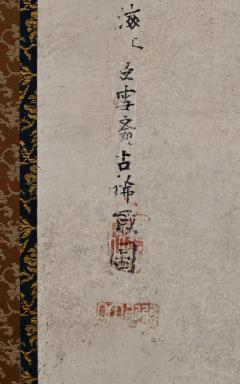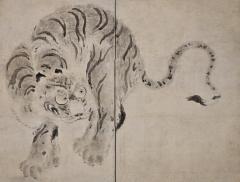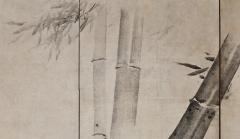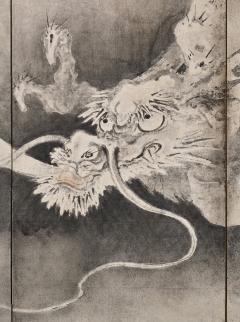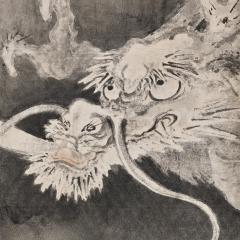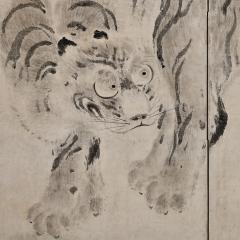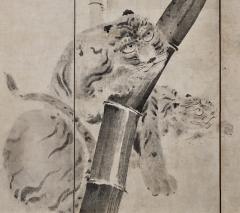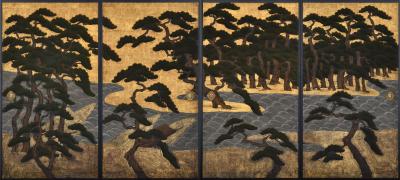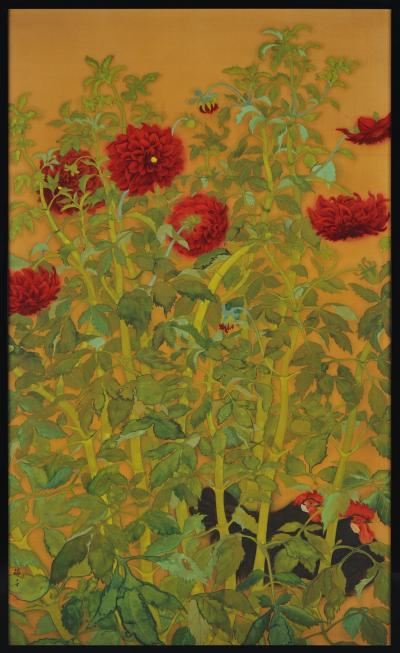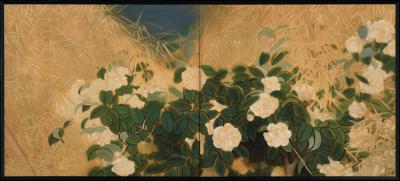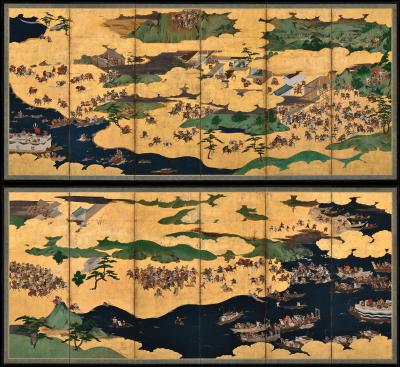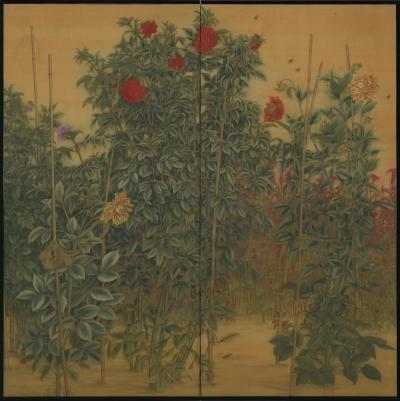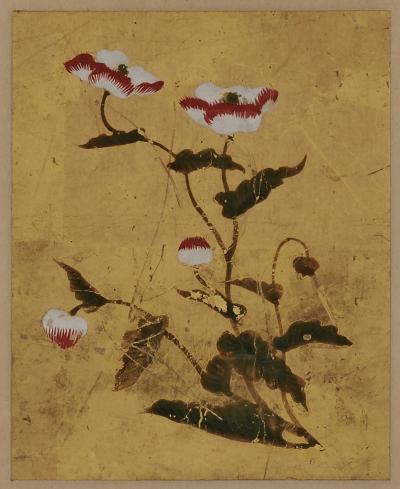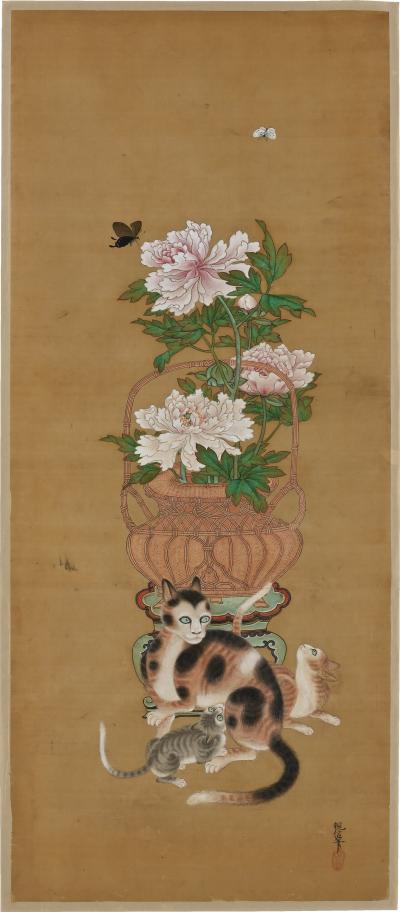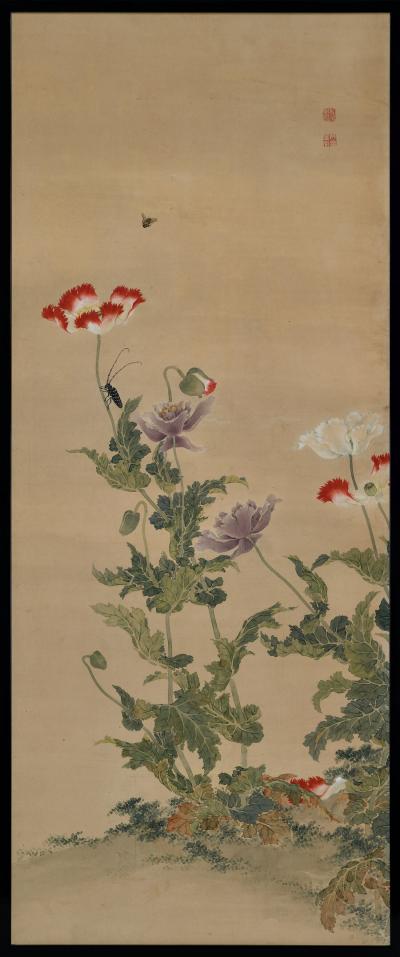17th Century Japanese Screen Pair. Tiger & Dragon by Kaiho Yusetsu
-
Description
Kaiho Yusetsu (1598-1677)
Tiger and Dragon
Early Edo Period, Circa 1650
A Pair of Six-fold Japanese Screens. Ink and slight color on paper.
Dimensions:
Each screen: H. 171 cm x W. 380 cm (67.5’’ x 149.5’’)
Price: USD 78,000
In this pair of early Edo period Japanese screens a group of tigers prowl in a bamboo grove whipped with fierce wind, while a dragon claws through clouds and mist. The dragon embodies elemental qualities – looming out of the mist, the coils of its body disappearing in the clouds. The dragon is calling for rain, symbolizing spring which is considered the fountain of life. On the other side, the tigers calls for the wind, symbolizing autumn which is considered the end of life. Tigers were familiar motifs within Japanese art from ancient times though the animals were imaginary to the people in the 17th century. While dragons and tigers are usually associated as sacred and ferocious, in this painting, both animals have rather amusing expressions. The tigers appear to glare at the dragon with cat-like eyes, and the look on the swirling dragon’s face appears almost affectionate – lending a playful flair to an otherwise magnificent theme.
The tiger and dragon are cosmological symbols of the balancing forces in the world. Screens such as this were originally meant to express the fluctuating nature of the world. For Japanese in the early Edo period, they likely suggested the powers of the cosmos. In Japan the tiger and dragon motif was originally absorbed into the circles of Zen monasteries before spreading into the secular world. The theme especially appealed to the military classes with the Kano school, the official painters to the Shogun and the samurai, being the leading contributors. The painter of this pair of screens, Kaiho Yusetsu (1598-1677), was closely patronized by the third Shogun Tokugawa Iemitsu. In his later years he worked with Kano school artists to produce large scale paintings on sliding doors and interior walls. The most notable of these were the waiting rooms of the Kyoto Imperial Palace and the residence for court ladies. His masterpiece, Dragon and Clouds, was painted at Rinsho-in in 1634. Rinsho-in was constructed by the Tokugawa Iemitsu in memory of his foster mother Lady Kasuga. His father, Kaiho Yusho, was arguably the most famous painter of dragons in Japanese history. Though he undoubtedly painted them, none of his tigers remain.
The screens have recently been restored and completely remounted in Kyoto utilizing traditional craftsmen and techniques. -
More Information
Documentation: Signed Period: Pre 18th Century Creation Date: 1650 Styles / Movements: Asian Art Incollect Reference #: 721393 -
Dimensions
W. 149.61 in; H. 67.32 in; W. 380 cm; H. 171 cm;
Message from Seller:
Kristan Hauge Japanese Art, based in Kyoto's museum district since 1999, specializes in important Japanese screens and paintings for collectors, decorators, and museums worldwide. Contact us at khauge@mx.bw.dream.jp or +81 75-751-5070 for exceptional access to Japanese art and history.


